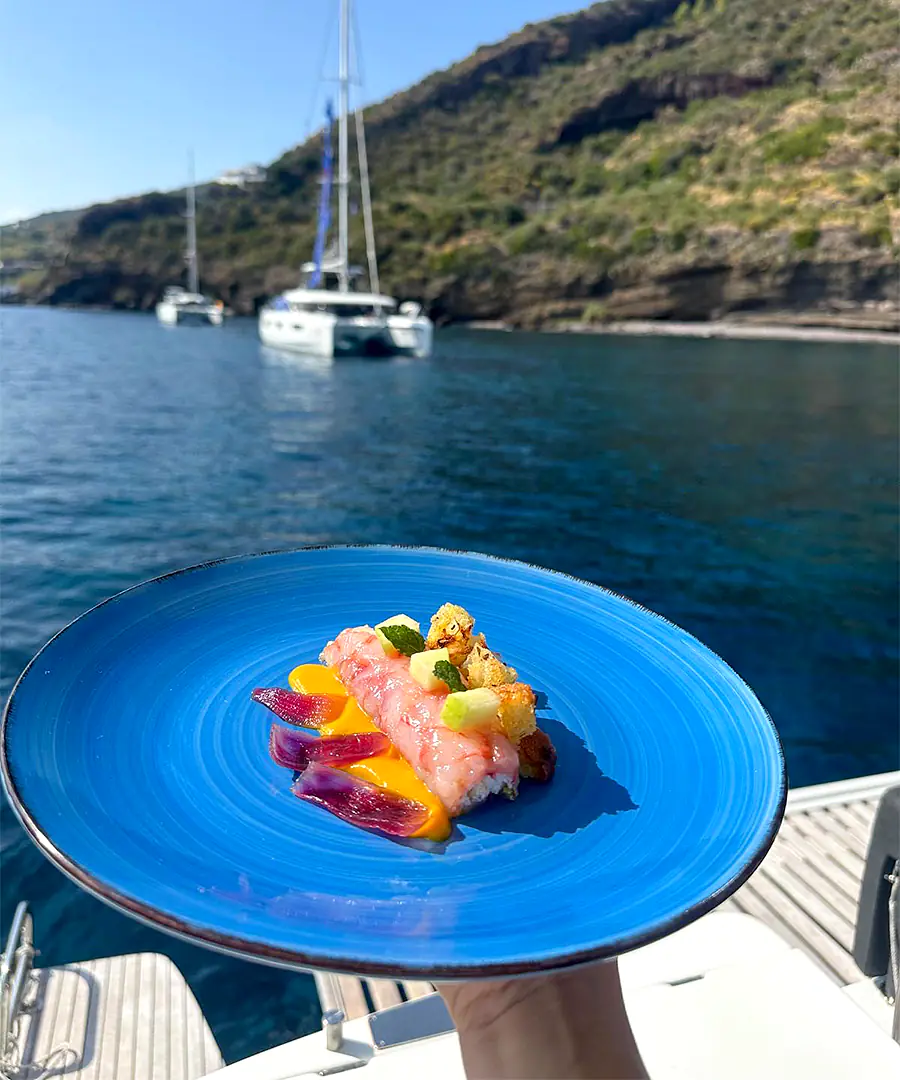
Just a few miles from the Northeastern coast of Sicily lies an earthly paradise for sailors—the Aeolian Islands. A UNESCO World Heritage archipelago, this group of seven unique islands is surrounded by a scattering of islets and rocks rising from the sea. Known for its stunning volcanic landscapes, crystal-clear cobalt and emerald waters, untouched beaches, and picturesque little villages, the Aeolian Islands offer a perfect blend of nature, history, and culture. With its protected reserves and breathtaking vistas, this Mediterranean gem attracts sailors and divers from around the world seeking an unforgettable experience.
Just a few miles from the Northeastern coast of Sicily lies an earthly paradise for sailors—the Aeolian Islands. A UNESCO World Heritage archipelago, this group of seven unique islands is surrounded by a scattering of islets and rocks rising from the sea. Known for its stunning volcanic landscapes, crystal-clear cobalt and emerald waters, untouched beaches, and picturesque little villages, the Aeolian Islands offer a perfect blend of nature, history, and culture. With its protected reserves and breathtaking vistas, this Mediterranean gem attracts sailors and divers from around the world seeking an unforgettable experience.




Your voyage through Sicily and the Aeolian Islands is uniquely tailored to you. From the fiery beauty of Stromboli to charming island villages, every detail reflects your perfect sailing experience.
Sail through a dramatic seascape shaped by fire and time, where each island tells a story of volcanic majesty. Drop anchor in the serene waters of Panarea’s Cala Junco, an ancient natural amphitheater, or in the shadow of Stromboli’s active crater, where the night sky glows with fiery eruptions. With SAILUXE, you'll experience these stunning locations in unparalleled exclusivity, embraced by nature’s raw beauty.

From snorkeling in the fumarole-warmed waters of Vulcano to paddleboarding through the crystal-clear coves of Filicudi, the Aeolian Islands offer endless ways to explore. Glide across the waves with seabobs, discover hidden sea caves accessible only by kayak, or embark on a guided trek to the summit of Stromboli, where a mesmerizing sunset meets the island’s legendary "Sciara del Fuoco" lava flow.

Indulge in the true taste of the Aeolian archipelago with exclusive culinary experiences. Relish a Michelin-starred dinner at Signum in Salina, savor fresh Malvasia wine and capers in a private tasting at a boutique vineyard, or let your private SAILUXE chef craft a bespoke onboard gourmet experience featuring the finest island ingredients.

Savor the authentic flavors of Italy with menus designed just for you, featuring fresh, locally sourced ingredients like the world-famous Amalfi lemons, vine-ripened tomatoes, and fragrant herbs.










Start your journey with an exhilarating hike to the summit of Vulcano. The panoramic view from the crater is simply unmatched, offering a stunning perspective of the entire archipelago. Feel the raw energy of the island beneath your feet and capture unforgettable moments in this dramatic volcanic setting.
A surreal experience awaits at Lipari’s Former Pumice Quarry Beach, where the water takes on an almost Caribbean hue. The contrast between the white pumice sands and the azure sea makes this an unmissable stop for a refreshing dip and a picture-perfect moment.
Indulge in the rich flavors of the Aeolian Islands’ Sicilian-inspired cuisine. Try the pan-seared swordfish, prepared Aeolian-style with the iconic cucunci (giant capers), and the rich assortment of rustici in the local delis. Finish with a sweet cannolo or a delicious granita for a true taste of the islands.
One of the most spectacular natural shows in the Mediterranean, the Stromboli volcano puts on a fiery display every evening. Whether you hike to the summit or watch the eruptions from the comfort of your luxury catamaran, this mesmerizing sight will be a highlight of your journey.
Salina is the heart of Aeolian wine culture, and no visit is complete without savoring a glass of its famous Malvasia delle Lipari. Visit a boutique vineyard perched above the sea, where you can indulge in tastings of this aromatic dessert wine, paired with the island’s renowned capers.

– Camille Le Boix –

With volcanic cliffs, crystal-clear waters, and charming villages, this archipelago blends raw nature with elegant Italian hospitality for a truly unique escape.

Navigate between the volcanic Aeolian Islands and crystal-clear Aegadian waters in this exclusive Sicily journey. Experience iconic destinations from Vulcano's mud baths to Marettimo's hidden coves, while enjoying gourmet meals and cultural discoveries throughout your voyage.

From the Emerald Coast to Bonifacio’s cliffs, this region offers stunning beaches, rugged landscapes, and a perfect fusion of Italian and French cultures.
Every Sailuxe journey is fully customizable. Contact us through our website, send us a quotation request, or share your preferences with us to craft a tailor-made itinerary just for you.
Our catamarans offer spacious lounge areas both inside and out. Relax under the sun on deck, enjoy a book in the shaded lounges, listen to music through our high-end sound systems, or sip a sunset cocktail prepared by your crew.
We recommend booking at least 3-6 months in advance, especially during peak season, to ensure the best availability.
Sailing on a catamaran is an immersive experience. The gentle sway of the sea, the sound of the waves, the wind in your hair, and waking up to a different breathtaking view each day make this an unforgettable adventure.
Cancellations must be made in writing. The applicable penalties are as follows: